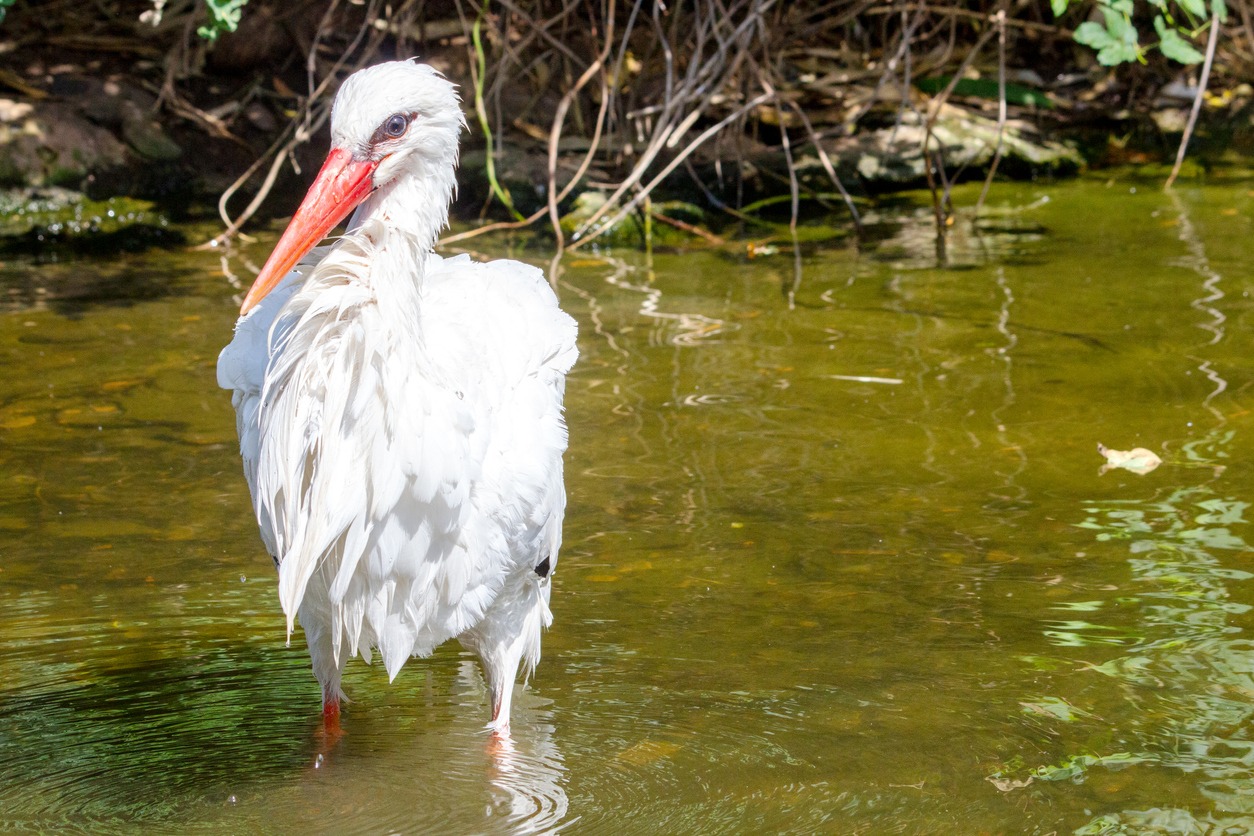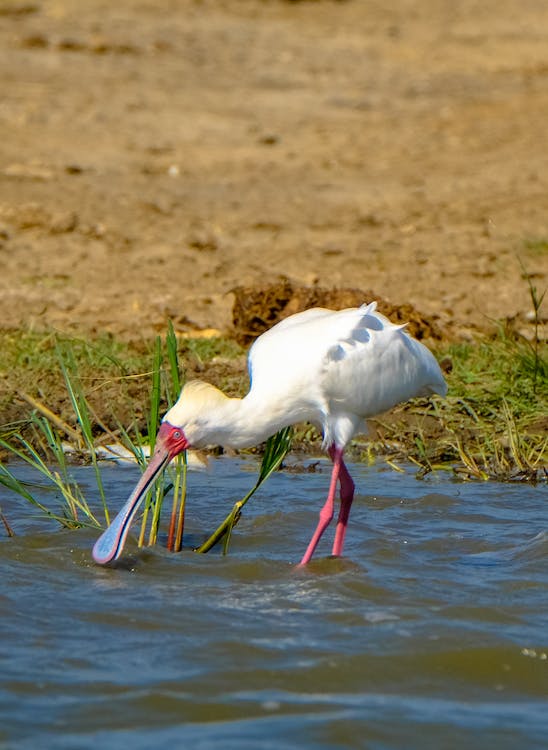The African Spoonbill, or also known as the Platalea Alba, is a wading bird that belongs to the ibis and spoonbill family Threskiornithidae. Its binomial name, when translated literally, means pearl waterbird. The species earned this name because of their pearly white plumage that makes them a glorious sight from a distance. This specific type of spoonbill has long, thin, yet strong legs that enable them to walk through wetlands.
This bird species is native to southern African countries such as Kenya, Mozambique, Botswana, Namibia, Zimbabwe, and South Africa.
Today, humans remain their biggest threat. African Spoonbills usually lose their habitat as a result of man’s increasing encroachment on their habitat. They are considered as lucky wading bird creatures. Their general population is prolific enough that they never seem to be threatened through most of their range. Their population may seem endangered to tourists, who have never seen this kind of species outside the African continent, but needless to say, their numbers continuously flourish in Africa.
While the African Spoonbill was listed as species of Least Concern by the International Union for Conservation of Nature (IUCN) Red List, the United Nations Program still coordinated efforts to protect the population of this bird species.
Its seven levels of scientific classification are as follows:
Kingdom: Animalia
Phylum: Chordata
Class: Aves
Order: Pelecaniformes
Family: Threskiornithidae
Genus: Platalea
Species: P. alba
The physical characteristics of an African Spoonbill
The African Spoonbill is an unmistakable bird species—it is a distinctive bird with all-white plumage, except for the legs, face, and spatulate bill. Unlike a Common Spoonbill, the African Spoonbill has no crest. It has pink, long legs and large toes that help them move effectively under the water.
Its face is white, too. Its small eyes are dark. Its large spatulate bill is grey in color.
An adult African Spoonbill is almost the size of a toddler, which is considered massive for a bird. It stands an average of 3 ft tall, with a wingspan that ranges from 4 to 4.5 ft.
The distribution and habitat of African Spoonbill
Although the population of African Spoonbills occurs across the entire African continent, their numbers are highly concentrated in the continent’s southern region. It frequents wetlands, rivers, streams, creeks, freshwater lakes, marshes, pools, estuaries, ponds, salt exploitation sites, and other water habitats.
The African Spoonbill prefers taking refuge in quiet, large, and shallow water bodies where it quietly hunts for food. This bird species is usually nomadic and wanders around in response to rainfall.
The behavior of the African Spoonbill
The African Spoonbills are introverted birds. They are too reserved to associate themselves with other bird species except for their own kind. They are also pretty shy when humans are around. Once they spot a human, they will fly away.
They only form small groups of three or five individuals to socialize. However, these small groups may join larger groups that make up thousands of birds, including ibis, flamingos, and herons. But since they are introverts, they keep their distance from other birds.
African Spoonbills are very silent. They do not make distinctive calls and cries except if a predator threatens them. Once they see a predator, it will make a loud grunt-like noise to alarm other African Spoonbills.
African Spoonbills make great parents too. Male and female African Spoonbills mostly mate for life, though sometimes, male African Spoonbills still attempt to copulate with other females. The birds will nest in colonies of 5-20 or 150-200 pairs in more extensive areas during the breeding season. Sometimes, friendly birds like African darters and herons will join the massive colonies.
The male gathers sticks, reeds, twigs, and creepers that are needed for the nest, while the female takes good care of building their oval-shaped abode. The egg-laying season takes place between July and November in southern Africa and between February and August in Botswana and Namibia. The pair of African Spoonbills will take turns in incubating the eggs until they hatch.
What do African Spoonbills eat?
Since African Spoonbills live in water bodies, it is probably no surprise that they love seafood. They feed on small fish, insects, mollusks, crustaceans, larvae, and other invertebrates. When foraging, the African Spoonbill will dip its long, flat bill into the water while looking for prey.
BOTSWANA BIRDS | SOUTH AFRICA BIRDS
NAMIBIA BIRDS | ZAMBIA BIRDS | ZIMBABWE BIRDS


